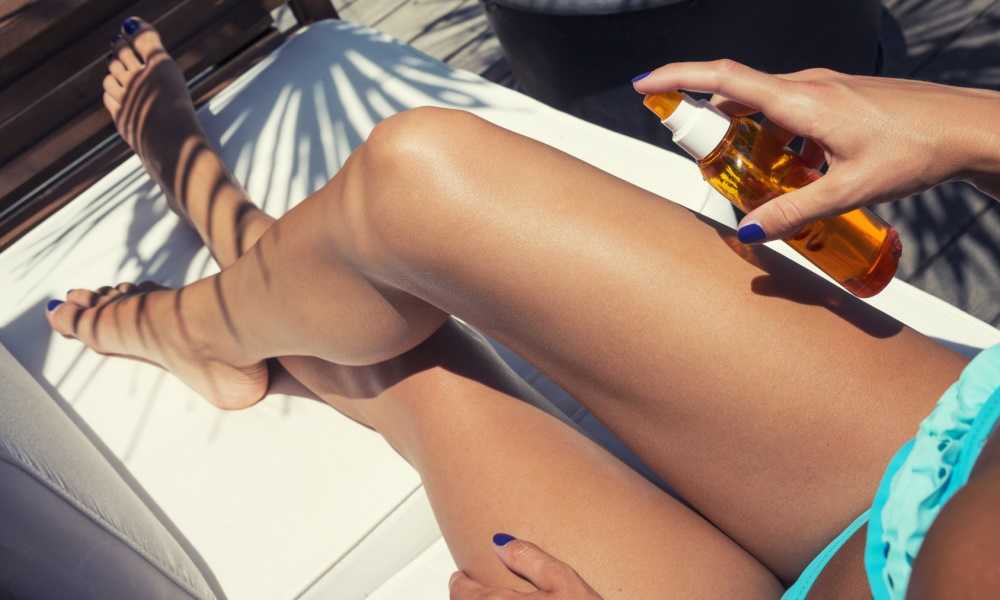Many people are satisfied with the quality of the tan that self-tanners create. It is natural-looking and flawless compared to a tan from sunbathing.
But are self-tanners really safe? Are they still effective even if they have been kept for a long period of time?
In other words, does self-tanner expire? Self-tanners have expiration dates. Once expired, self-tanners are not as effective at tanning the skin.
Keep reading to learn all you need to know about self-tanner expiration.
Does self-tanner go bad?
Aside from the ingredients and possible side effects of self-tanners, users are concerned about these beauty products’ expiration period or date.
Although they are non-toxic, when they reach their expiration date, they are ineffective. Expired self-tanners will not give you the kind of tan you want. Rather, your skin will have blemishes and won’t absorb the self-tanner.
You may still use self-tanners from last season, but for your information, they have an average shelf life of up to one year. You may use self-tanners past their expiration date but they may no longer be as effective as a fresh product.
Also, try to be sure you are using a high-quality sunless tanner, like my absolute favorite that you can get from Amazon. This will ensure that you get a beautiful streakless tan that lasts.
I’d also recommend you get a tanning mitt for just a few dollars more, as this will make the application process much easier without over-tanning your hands.
How do self-tanners lose their effectiveness?
A self-tanner usually has a shelf life of 6 to 9 months. If the container has a pump, 12 months is the average shelf life because it is enclosed in a tightly sealed manner.
The liquid component in the self-tanner may evaporate in time, and as it disappears, the DHA content becomes denser and the color may not be the same quality as it was when first purchased. The concentrated DHA creates a poor-quality tan.
There are so many self-tanners on the market, so be sure you get one that is well is high quality and well-reviewed.
Are self-tanners really safe?
Compared to being exposed to the sun’s harmful UV rays, self-tanners are comparably safer, and dermatologists recommended them instead of sunbathing. The DHA component of self-tanners is approved by the Food and Drug Administration (FDA). DHA is the active ingredient that causes the darkening of the skin.
Self-tanners come in different forms: lotions, creams, powders, sprays, and pills. The color caused by the self-tanners only lasts for a few days. The color wears off as the dead skin cells are shed. If you want to keep the tan, reapply the self-tanner after 3-4 days.
Some self-tanning lotions and creams are formulated with skin-nourishing ingredients. They not only leave the skin tan but also moisturized and well-nourished.
Are self-tanning pills safe?
Self-tanning pills are considered unsafe. They are formulated with the color additive canthaxanthin. Although the FDA approves canthaxanthin as a color additive in food, it is not approved for skin coloring purposes. Self-tanning pills contain high amounts of canthaxanthin.
When this ingredient is taken in large amounts, it might cause hives, liver problems, and damaged vision. Hence, dermatologists and health practitioners do not recommend self-tanning pills.
How do you apply a self-tanning lotion?
Self-tanners usually come in lotions: What is the best way to apply it?
- Exfoliate the skin before applying a self-tanning lotion. Scrub the skin, if necessary, to remove excess dead skin cells. Pay attention to knees, elbows, ankles, and other areas with thick skin. After exfoliating, dry the skin.
- Apply the self-tanning lotion in sections. Apply it to the body according to sections such as arms, legs, and torso. Apply it in a circular motion. To prevent your hands from getting stained, wash them with soap and water after applying the tanner to each body section.
- Areas with thick skin absorb more self-tanning lotion. Dilute the lotion in these areas by lightly rubbing them with a damp cloth.
- Wait for the self-tanning lotion to dry; it usually dries in about 10 minutes. Wear loose clothes for a few hours to prevent sweating. Allow enough time for the self-tanning activities to take effect.
- The tan will usually wear off in a few days. Re-apply the self-tanning lotion after 3-4 days if you want to maintain your tan.
- Use UV protection even if you already have tanned skin. Self-tanning lotions and other products do not have sunscreen. When you plan to spend time under the sun, apply an appropriate sunscreen to protect your skin from the risk of skin cancer and other problems caused by the sun.
There are many self-tanning products that promise a natural-looking tan, but not all of them are true to their promises. Ensure that you purchase the right product to avoid unnecessary blotches, side effects, and other unwanted results.
